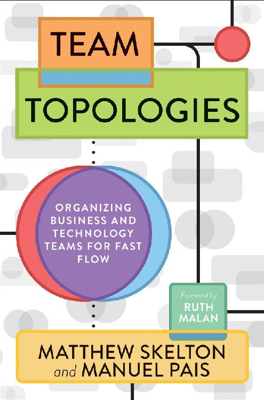Static Team Topologies
Static Team Structures and DevOps Topologies
Organizing teams based on business domains rather than just technical expertise or activities is critical. Static team topologies, which represent a snapshot of an organization's team structure at a specific point in time, are detailed in this chapter. These structures are not meant to be permanent but are adaptable based on the organization’s evolving context.
Intentional Team Design vs. Anti-Patterns
Intentionally designed team structures, termed "team topologies," are essential for effective software delivery. Anti-patterns such as ad hoc team design and frequent reassignment of team members lead to inefficiencies by undermining team stability and communication. Examples include teams that grow unwieldy or teams created for a narrow technical purpose without consideration for broader organizational dynamics, which can hinder software delivery and erode team autonomy.
Flow of Change and Organizational Design
Organizations are encouraged to design teams that aid the smooth flow of changes from concept to production, avoiding traditional silos and optimizing for speed and safety. An example here is Spotify’s model, where small, autonomous cross-functional teams (squads) are grouped into tribes to foster alignment without sacrificing agility. However, the model’s effectiveness heavily depends on underlying culture and adaptability, cautioning against blind replication without understanding one's unique organizational context.
Importance of Sensing and Feedback
The chapter emphasizes the importance of organizational sensing – the capability to detect and respond to internal and external signals rapidly. By involving all levels of staff in feedback loops, especially from live software environments, organizations can improve responsiveness and operational efficiency. This is contrasted against traditional linear models which often fail to integrate lessons from the operational phase back into development.
DevOps and Evolving Team Dynamics
The rise of DevOps is linked to the need for integrating development and operational efforts, moving away from the 'throw it over the wall' mentality to a more collaborative and empathetic framework. The DevOps Topologies catalog aims at facilitating discussions about effective team structures and practices and underscores that while there is no universal solution, there are certainly detrimental practices that should be avoided.
Handling Team Dependencies and Evolution
The chapter discusses handling team dependencies by visualizing and managing wait times and interdependencies, which help in maintaining a flow of work that is as seamless as possible. Evolving team structures in response to shifting business and technological landscapes is also crucial. For instance, transitioning a DevOps team from a merely operational to an evangelizing role can help embed lasting efficiencies and self-sufficiency across teams.
Strategic Deployment of DevOps Topologies
Implementing DevOps Topologies should consider organizational context, maturity, size, and specific challenges. These topologies provide a framework for evolving team designs thoughtfully and strategically rather than reactively, ensuring they remain relevant and effective as circumstances change.
Example: Transformation Through DevOps Topologies
The transformation journey of an organization utilizing DevOps Topologies offers insights into how teams can evolve from traditional silos to more integrated, responsive structures. The narrative includes how initially separate teams were gradually brought together through shared tasks and goals, fundamentally altering the deployment pipeline and operational dynamics towards a more cohesive and autonomous setup.
